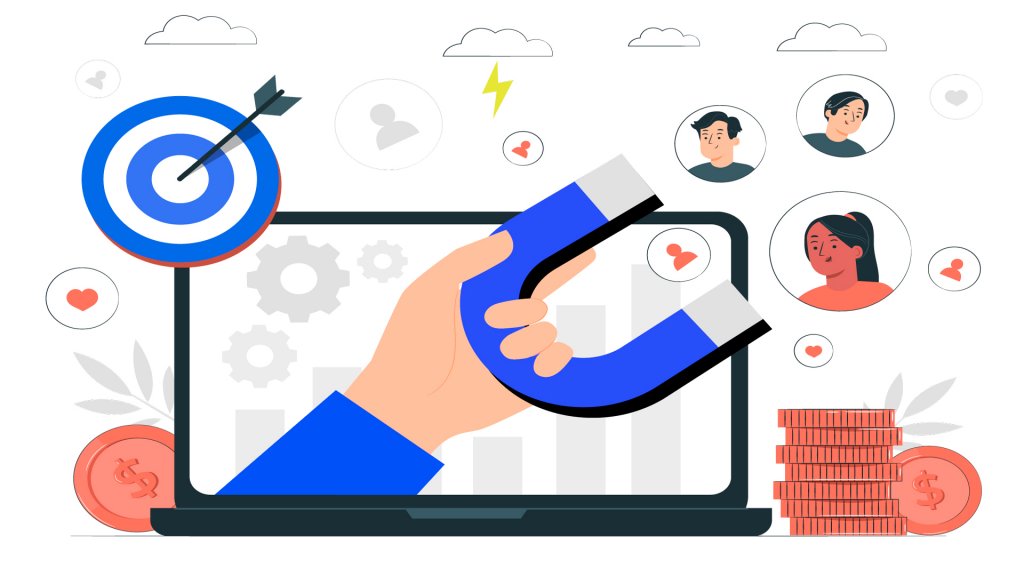What is Business Growth?
Growth is always essential for every type of business. Companies are always looking for an edge to stay ahead of the competition. Increasing sales and strengthening its position in the market, while struggling with many other aspects of the business-like operations, finances and management are some ways a company can grow.
These changes in a company can be internally or externally influenced by factors such as changes in regulations, new competition, or the introduction of new technology.

What is business growth? Business growth is the process of expanding a company’s revenue and increasing its market share. It may also refer to the process of expanding a company’s product line, diversifying its industry, or penetrating new markets. Business growth is a phase where the business extends to the point of expansion and seeks many options to generate more profit. It is a function of the business life cycle, trends of industry growth, and the owner’s desire for equity value creation.
—
According to the Harvard Business Review, a company has to grow at least three times its size every five years to remain competitive. However, only 3% of small businesses manage to get this financing.
This is where some business growth capital investment opportunities come in. With more and more investors and financial institutions available, these funds are making it easier for small businesses to startup ventures to get the money they need for their next phase of growth. These funds offer the best funding option for many businesses as they do not require any equity ownership in return. This is an attractive alternative as many businesses would like to keep their intellectual property rights with them.
The company can grow by increasing the number of customers and improving customer loyalty.
Particularly in a recent climate where there is so much competition, customer loyalty is becoming more important than ever. The company needs to have a customer retention strategy to keep its customers coming back time and time again. It is more important for business growth.
Business Growth vs. Growth-Driven Business: –
A company that is focused on growth will take risks and try to make decisions that will help them to grow its company. This can be risky, but it has a good chance of success.
In contrast, a growth-driven business has a solid foundation in profitability which typically comes from the core business. And, this allows them to focus on investments needed to create more growth.
In the long run, a company should be growth-driven because they are usually more predictable. They also have an advantage over their competitors in terms of capitalization.
A Growing Business
As the growth of business occurs, the rate of revenue can be an indicator of it. The growing business may have additional revenue sources or a better product, which leads to an increase in revenue.
Organizations seek to drive growth, and it is important to know the metrics that are used. The first metric organizations may track is gross profit, which is the top-line revenue minus the cost of goods sold.
Gross profit can be tracked as a percent of revenue or as a dollar amount. It is divided by revenue and tells us what percentage of each dollar in sales is left over after costs have been subtracted. Gross profit divided by sales tells us how much money we have left over for every $1 in sales. They may also analyze their revenue before interest, taxes, appreciation, and depreciation to identify their business as growing.
Another signal of a growing business is when new employees are hired each year. That’s because the more people you have, the more likely it is that your business grows. A growing business should be closely monitored to ensure that it’s heading in the right direction. And when you hire another employee, they can give fresh perspectives on what could be going better.
A Growth-Driven Business
On the other hand, a growth-driven business focuses on and responds to market fluctuations, focusing on long-term growth. Growth-driven businesses can identify and capitalize on the opportunities and use them as leverage to create a better business.
A growth-driven business is proactive and responsive to market fluctuations. They focus on long-term growth. They are better at identifying and capitalizing on opportunities than providing products that people want.
Growth-driven companies focus on the customers’ needs and want to achieve revenue generation and retention goals. They also align their sales and marketing efforts to boost revenue generation and customer retention while focusing on product innovation, process optimization, cost reduction, risk mitigation, customer experience enhancement, company culture evolution, etc.
Companies that rely on the data to figure out how and when to grow will be left behind. Instead of prioritizing the analysis of data, growth-driven companies create and adopt systems and processes that drive their company’s growth.
The Importance of Business Growth
Businesses need to grow to stay alive. Growth is the key to success. This is true for any business, whether it’s a startup or an established company. If a company does not grow, it will eventually die out.
With effective growth, business owners and operators can acquire more assets, develop innovative products and services, and enhance their revenue. With this, the business will attract more clients from different places and have the opportunity to recruit more workers. Business growth will give a competitive advantage, as it shows the company’s credibility and ability to effectively serve customers what they want.
Better adaptability in the market:
The growth rate of a company is determined by its ability to be agile in the market and have better resilience.
Supremacy over competitors in the industry:
Business growth is the key to success for any company. To stay competitive, companies need to be aware of the importance of business growth. The importance of business growth is often overlooked by organizations that are not as well established or not as profitable as they would like to be.
Attract a talented workforce:
This is one of the most important factors to attract a talented workforce. This is because people want to be with a company that has longevity and the ability to grow in the long run. A company with a strong business model has a better chance of attracting talented employees.
More buying power:
The importance of business growth is not lost on suppliers and third-party contractors. These business partners prefer working with companies that know how to operate effectively and profitably.
This is because they want to work with a company that will be in a position to provide the right products or services for their customers.
Why is business growth important for small businesses?
Business growth is important for every company, but the type of growth will depend on the business growth stages. For example, startups need to grow quickly to survive. Whereas, established businesses can focus on quality over quantity. There are many reasons why business growth is important for small businesses and how small businesses grow. For example, it helps them reach a wider customer base and generate more revenue.

It is important to grow a business to cement its position in the market. The size of a company is not the only factor that determines success, but it does play an important role. If a company is large enough size, it will be able to access more customers.
Grown companies always want to ensure their metrics are going in the right direction. An increase in revenue, brought about by sales process planning, could help a business build liquidity to protect against future risk.
What are the main business growth drivers?
Growth is a critical part of any company’s success. It is also the most challenging part to achieve. Growth requires a lot of hard work, time, and money.
Here are some factors that may help a business to grow:
People with the motivation and capability to drive growth
The most important factor is having people’s business growth plan at the head of the business. A growth-focused owner can be a great asset to any company. They can make decisions that will drive revenue, and they are motivated to do so. They have a strong vision for the future of their business, and they know what steps need to be taken for it to grow.
To drive growth, a company needs managers and employees with the motivation and ability to push for expansion.
Managers are often the key driver of a company’s growth. They have the expertise and motivation to push for expansion. They also have the skills and knowledge that allow them to see opportunities that others may not be able to see.
A strategy that prioritizes growth
A company’s growth strategy should be built around people. This means that the company needs to have a clear understanding of what it is that they do and why they do it. It also means having a clear sense of their values and priorities.
The strategy that prioritizes growth is all about taking risks and investing in the future. This could involve bringing in new customers, releasing more products, or entering new markets. A business growth idea is to find a way to grow the company’s revenue and customer base quickly.
Processes and infrastructure required to facilitate growth
The process of growth is a lengthy and complicated one, but it is also one that requires a lot of planning and preparation. It may be difficult to grow if you don’t have the right processes in place, or if you don’t have the right infrastructure.
Once the company hired people who want to grow and has a strategy that prioritizes growth, then the company needs to have the right processes in place to facilitate growth.
One important aspect of this is implementing automation software that makes processes more efficient. This can include using tools like CRM systems to manage customer relationships or using cloud-based storage solutions to store sensitive data. It can also mean ensuring warehouses are large enough to accommodate the amount of inventory that will be needed for future growth.
Enough funding to make growth possible
All factors have one thing in common, they require funding to apply.
Funding is essential for the growth of any company. Without it, a company cannot grow and expand. It is necessary for the development of new products and services, as well as to maintain existing ones.
If a company’s owner doesn’t have enough money to make the right hires, invest in the product, or implement processes, then it’ll be difficult to achieve business growth.
What is Lead?
What is a lead meaning? A lead can be defined as any person who has shown interest in a company’s product or service. This could mean that they have visited the company’s website, downloaded an ebook about the product, signed up for a free trial of the software, etc. It can be in some way, or shape. Or form.

A lead is a potential customer. More specifically, it is a person who has shown some form of intent that they are ready to be contacted with offers and information about the product or service. Leads can come from any number of different sources, such as advertisement, direct marketing, social media, or even word of mouth.
The customer business growth life cycle typically starts by generating leads, who then become prospects if they accept the offer (typically in the form of an email), are qualified by the company and become customers if they buy the product or subscribe to a service.
Leads can be qualified as cold, warm, hot, or hot prospects which are categorized by how close they are to purchasing your product. Cold leads are people who have not had any contact with your company so they will need a lot of persuasion to buy. Hot leads are those who have already bought the product and only want more information on other products you sell while warm leads are those who want more information but aren’t ready to buy just yet.
What is Lead Generation?
What is lead generation meaning? Lead generation is the process of attracting prospects to your business and increasing their interest through nurturing, all to turn them into qualified leads. It is an important process for any company that wants to increase its sales or generate more customers for its products.
The basic purpose of lead generation is to provide potential customers with information about a product or service from a business before they decide to make a purchase.
—
Leads can be generated through different channels, such as advertising, public relations, and social media. A lead may also come from interested individuals responding to an offer in exchange for something they value, like more information or advice on how best to use the product/service being marketed.
Lead generation can be accomplished in different ways. Some ways are job applications, blog posts, coupons, live events, or online content.
Lead generation process for generating leads for a business. Lead generation is an essential part of the sales funnel for many B2-B companies since their products can cost thousands of dollars.
A lead is defined as a potential customer who has shown some level of interest in what you’re offering but has not bought yet. Businesses use it to collect data from the target audience. It’s an opportunity for businesses to educate and nurture prospective customers through email marketing.
Why do you need lead generation?
The key to lead generation is to create interest and a sense of urgency. Simply put, you need to encourage people who are interested in your business to make the first move.
Lead generation has been around for years but it was never as important as it is now. Nowadays, with the rise of digital marketing and content marketing, you need new sources of leads for your business. Lead generation is about creating demand for a service or product all by yourself.
Why lead generation is important?
Lead generation refers to activities like form filling and web lead forms, which are necessary for content marketing purposes. If you don’t have leads, you’ll have a tough time generating traffic or converting it into buyers.
Some think that lead generation is not necessary or they see it as a low-quality exercise. But in the context of marketing, the goal of generating leads is to generate prospects. These prospects will then convert into customers who will buy your products or your service.
Lead generation falls within the second stage of inbound market methodology because it focuses on attracting qualified prospects with a free trial/ demo, content, or blog post about your company and its products. There are many companies that provide lead-generation services for your business.
Industry experts believe that lead generation is important for any company because it drives sales and increases profits. Start and grow any business with PnaPna free leads and management software. Click here.
Here are some steps that show how lead generation fits into the inbound marketing methodology:
- First, your visitor found your business through one of your marketing channels, such as your website, blogs, or social media page.
- Then visitors can click on your call-to-action – an image, button, or message so that website visitors can take some sort of action.
- That click-to-action takes your visitor to a web page, which is designed to capture lead information in exchange for an offer.
What is a Lead Magnet?
What are lead magnets? A lead magnet is a type of offer or incentive that a brand promotes in return for the lead’s contact details, such as an eBook, software, or some other type of digital content. Lead magnets are an excellent way to collect email addresses from potential customers.

The first thing that comes to mind when we mention lead magnets is probably the word ‘gift’. This can be seen in marketing and advertising, where a potential customer receives something, they value in exchange for their contact information.
Lead magnets are also known as ‘lead generation tactics’ because they help brands attract leads who will then be converted into customers at a future date.
Why does your business need a lead magnet?
A lead magnet is a valuable asset that you can offer to your potential customers, to get them hooked on. It could be an information product that teaches them how to invest in stocks or a downloadable cheat sheet of tips for running a restaurant. In any case, the goal of this asset is to get your business more leads and sales.
There are so many reasons why you need a lead magnet. You might want it to help you generate conversions by providing something valuable. For those who want more information about the topic, you’re talking about. Or maybe you want it as an incentive for people who sign up for your email list or visit your website again and again.
Benefits of Lead Magnets:
A richer email list:
Lead magnets attract potential leads into sharing their email addresses. It is a win-win, a free product or service for the information, and you get more email subscribers to your list, which you can use later in your email marketing campaigns.
More trust between you and your clients:
Lead Magnets are one of the essential tools in keeping leads engaged with your company. They provide value to them and make them want to get your products more, which translates into more revenue for you. Lead magnets offer something i.e. highly relevant and credible. It makes you trustworthy in the eyes of your prospective clients to share contact information with you.
High-quality leads instead of freeloaders
Lead magnets are often seen as a one-time solution. However, they provide many benefits over the course of the lead’s lifetime. They help generate quality leads and can be used by retail buyers. It is not always clear in the beginning whether a lead becomes a customer or not.
Higher profits
Are lead magnets worth it? The answer relies on the types of lead magnets. Each business has a different type of service or product, but even if you get a 3% conversion rate from one lead magnet, it is worth giving it a try.
What is a Lead qualification?
What is the lead qualification? Lead qualification is a process that helps determine if the lead fits your buyer’s criteria. Lead qualification is also used to weed out bad leads and find potentially good ones.
The goal of lead qualification is to put your time and energy into qualified leads that have the most potential for conversion. The process is built on the idea of maximizing conversion through prospecting techniques.
Leads that are not qualified are either not a good fit for your business or require too much time and effort for you to generate enough revenue from their sales.
What is Lead Nurturing?
The lead nurturing process helps companies build their relationship with the customer by systematically guiding them through the sales funnel in a specific order, at a pace they are comfortable with. It’s often used as an alternative to email marketing or cold-calling. Because it keeps a company top-of-mind in front of potential buyers.
Lead nurturing doesn’t stop once someone becomes your customer. It can help facilitate your relationship through repeat purchases (up-selling), referrals (cross-selling), or other considerations.
Recommendation
We recommend looking at PnaPna.com.



Pingback:What are the Types of Lead Generation? - Pnapna Insights